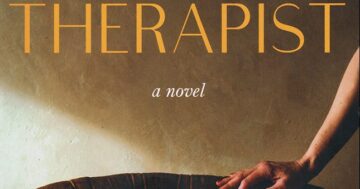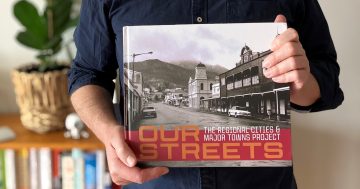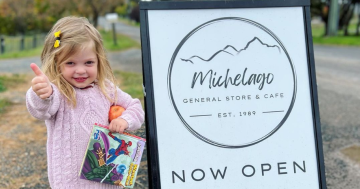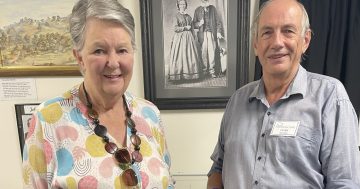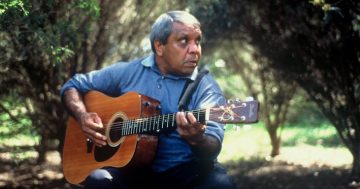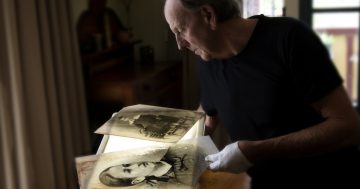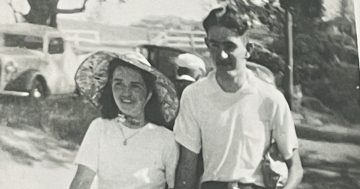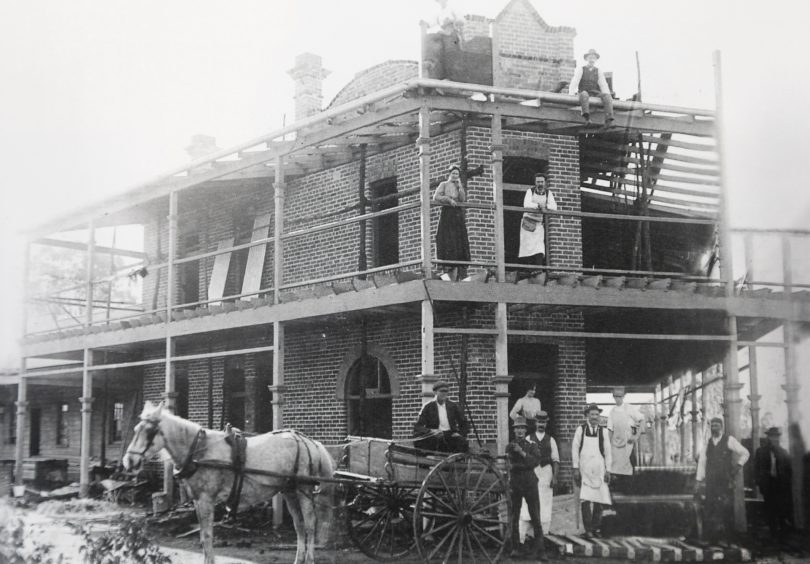
The Royal Hotel in Wallendbeen was demolished in 1933. Photo: Supplied.
The tiny South West Slopes Village of Wallendbeen has both a big history and a big-hearted historian.
Local Marcia Thorburn has just released her second history of the district following the success of The Wallendbeen Story, and says she was inspired by the district’s larger than life characters including Donald Mackay, immortalised as the last of the great Australian explorers.
Wallendbeen Photographic History: Special Tributes includes a section on Mackay’s Outback exploits, which made national news in the early decades of the 20th century.
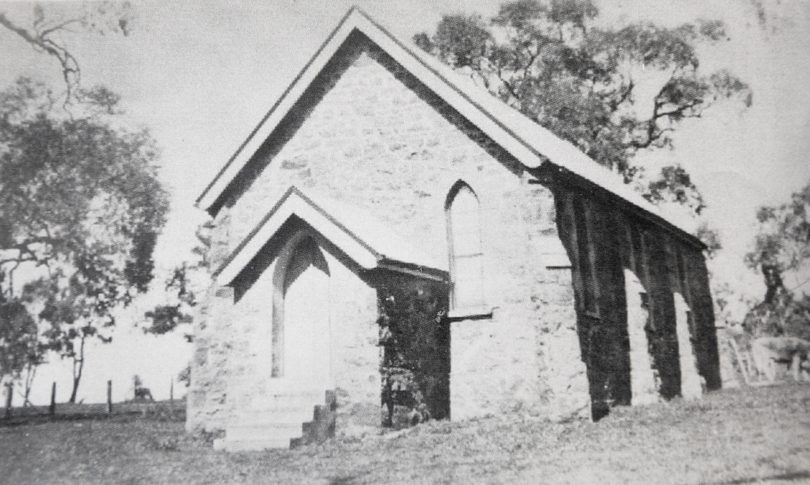
The former Wallendbeen Presbyterian Church, built in 1882. Photo: Supplied.
Mackay led and funded multiple aerial surveys across some of the most remote territory in the Outback between 1930 and 1937, pioneering the first ground-truthed mapping of the Nullabor Plain north of the Transcontinental railway line, the Tanami desert and what was then Ayers Rock.
Among his discoveries was a large and hitherto unmapped salt lake on the border between the Northern Territory and Western Australia, eventually named Lake Mackay in his honour.
In 1926 he led a camel expedition into central Australia with geologist surveyor Herbert Basedow, one of the few to record the traditional life of Indigenous Australians. Mackay and Basedow both actively lobbied the Australian Government for better treatment of Indigenous people and campaigned for an improvement in Indigenous health as a result of their travels.
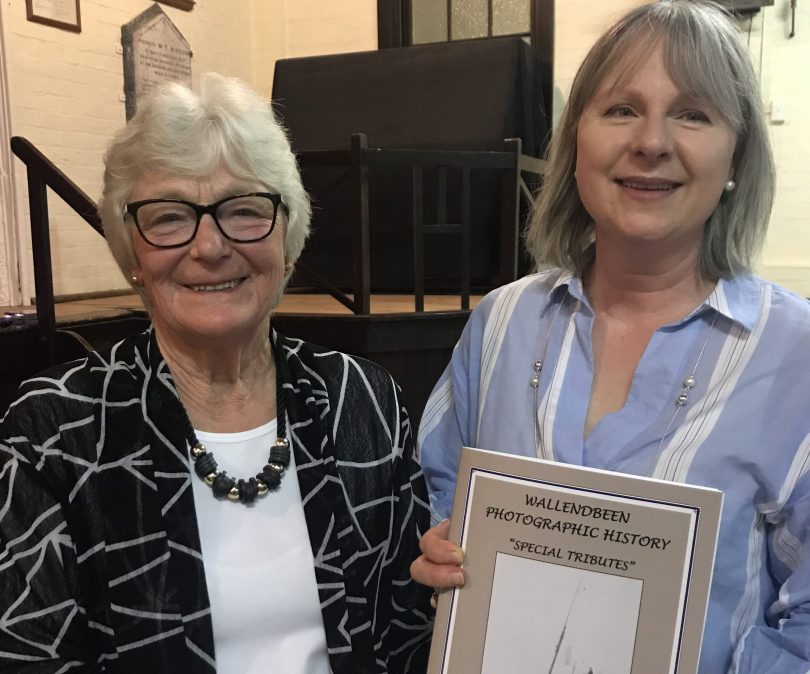
Marcia Thorburn and her daughter Lynne at the launch of her second book about the village of Wallendbeen. Photo: Genevieve Jacobs.
Marcia and her husband Ken are both keen outback travellers and thought that the locally born and bred explorer’s contribution has not been sufficiently recognised, either in the history of the district or more widely.
“Outback travel linked all this together for us,” she said at the book’s recent launch. “Donald Mackay’s expeditions intrigued us and we both felt that he hasn’t been acknowledged as much as he should have been.”
Marcia’s first book developed from an initial attempt to write about her parents’ lives. When the fifth-generation local resident sat down to record their stories, she found they had many more stories about the district. That prompted her to include many other local families in the book, which became a 10-year undertaking.
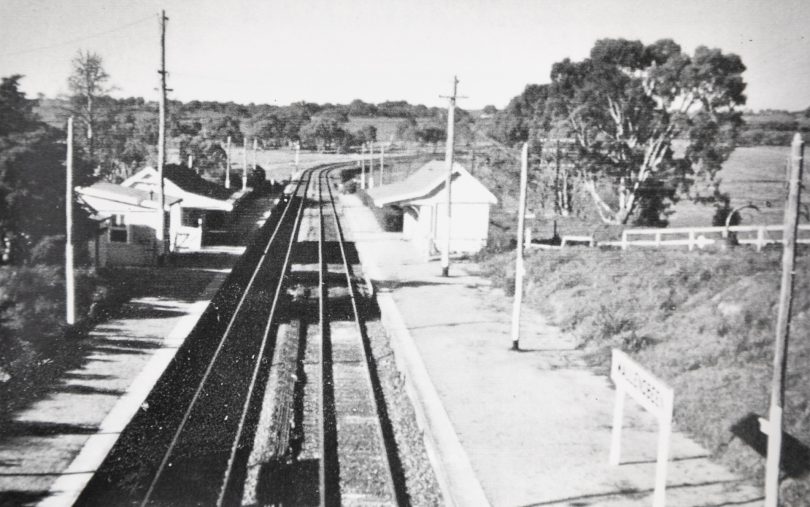
The Wallendbeen railway station was an important stop on the southern line. Photo: Supplied.
In the course of her research, she came into contact with people all over Australia connected with the village who began sending her photographs and newspaper clippings.
“The interest in Wallendbeen was amazing, I had people ringing up from all over the country,” she says.
“People looked up family stories on Trove or found old newspaper stories and sent them all to me. I had massive folders full of Wallendbeen history, so I felt I had to share the photos and stories.”
While her first book took a decade to write, Wallendbeen Photographic History: Special Tributes was assembled in six months, with the material at her fingertips.
In addition to photographs of Donald Mackay and his pioneering family, and the grand War Memorial he funded after World War I, the book includes photographs of the village’s hotels, school buildings, butchers shops and smiths. There’s a lengthy section about the railway’s impact and photographs of school events including the long-running Baldry Shield small school sports day.
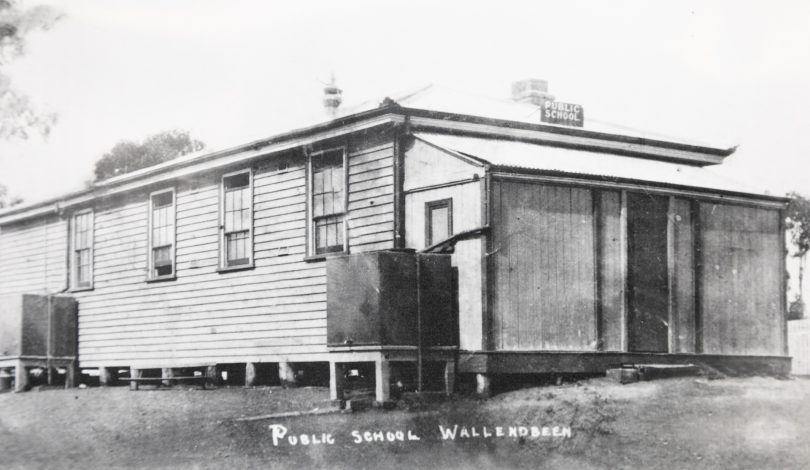
The first Wallendbeen Public School building, from around 1898. Photo: Supplied.
“I think it’s a very special village,” Marcia says.”There are so many families across the district who have lived here for generations. The village is changing as new people come into the community, but it’s a lovely place and I’d never want to leave. There is such a strong community spirit.”
Marcia continues her efforts to enhance the village’s reputation. While a plan for painting the wheat silos has been forced into abeyance by the anticipated huge harvest, she wants to put Wallendbeen on the map cultural and socially.
“Cootamundra has Donald Bradman, who is actually a relative of mine,” Marcia says. “I just feel that we should step up and celebrate the village’s history and some of the remarkable people who have come from here, like Donald Mackay.”
Wallendbeen Photographic History: Special Tributes is available locally, from the Cootamundra Newsagency and Wallendbeen Post Office.












